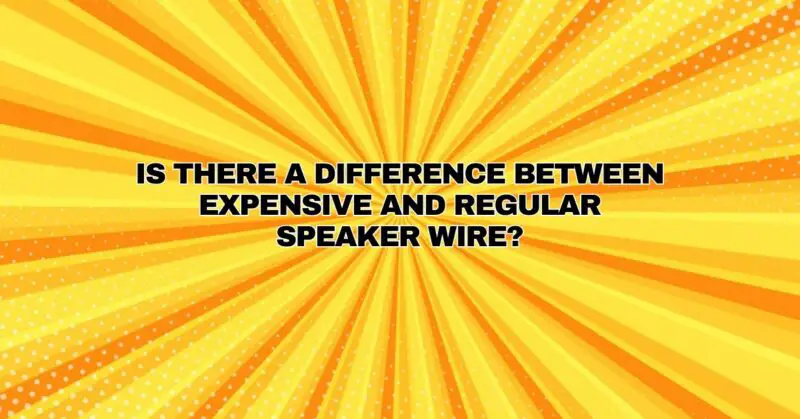The world of audio equipment is brimming with choices, and among them, the selection of speaker wire often sparks debate among audiophiles and casual listeners alike. One recurring question is whether there is a substantial difference between expensive, high-end speaker wire and regular, more affordable options. In this article, we will delve into this topic, examining the factors that distinguish expensive and regular speaker wire and whether the cost justifies the perceived benefits.
Understanding Speaker Wire
Before we explore the differences between expensive and regular speaker wire, let’s establish a basic understanding of what speaker wire is and its primary function. Speaker wire is an electrical conductor used to transmit audio signals from an amplifier or receiver to loudspeakers. It comes in various sizes (measured in American Wire Gauge or AWG), materials, and configurations.
Key Factors That Differentiate Expensive and Regular Speaker Wire
- Wire Gauge (Thickness):
- Regular: Standard, more affordable speaker wire often has a higher AWG rating, indicating a thinner gauge. Thinner wires have higher electrical resistance, which can result in power loss and decreased efficiency in transmitting audio signals, particularly in high-powered systems or longer cable runs.
- Expensive: High-end speaker wires typically feature a lower AWG rating, indicating thicker gauges. Thicker wires offer lower resistance, which enhances power transfer and minimizes signal loss over extended cable runs, benefiting high-powered audio systems.
- Conductor Material:
- Regular: Budget-friendly speaker wires frequently use copper-clad aluminum (CCA) conductors. CCA is less expensive than pure copper but has inferior electrical conductivity.
- Expensive: Premium speaker wires often feature pure copper conductors, which offer superior conductivity. Copper is an excellent conductor of electricity, ensuring efficient signal transmission without significant resistance.
- Insulation and Dielectric Material:
- Regular: Inexpensive speaker wires may employ basic insulation and dielectric materials. While functional, these materials may not provide the same level of protection against interference and signal degradation.
- Expensive: High-quality speaker wires often feature advanced insulation and dielectric materials designed to minimize signal loss, reduce interference, and maintain signal integrity. These materials may include foamed polyethylene, Teflon, or other proprietary blends.
- Connector Quality:
- Regular: Low-cost speaker wires may come with basic connectors or lack connectors altogether, requiring users to attach their own. These connectors may not offer the same level of durability or contact quality as more expensive options.
- Expensive: Expensive speaker wires often come with high-quality connectors, ensuring a secure and reliable connection between the wire and components. These connectors are designed to reduce signal loss and maintain a consistent audio signal.
- Build Quality and Durability:
- Regular: Budget speaker wires may have less robust construction, making them susceptible to wear and tear over time. This can result in degraded performance or even breakage.
- Expensive: High-end speaker wires are typically built with durability in mind. They may feature protective jackets, reinforced connectors, and superior construction techniques that extend their lifespan.
- Aesthetics and Flexibility:
- Regular: Affordable speaker wires may prioritize cost over aesthetics, resulting in plain or unattractive designs. They may also lack flexibility, making them harder to route through tight spaces.
- Expensive: Expensive speaker wires often feature attractive designs and improved flexibility, making them easier to install and less obtrusive in your audio setup.
Conclusion
While there are differences between expensive and regular speaker wire in terms of gauge (thickness), conductor material, insulation, connector quality, build quality, and aesthetics, the question remains: do these differences significantly impact sound quality? In most real-world listening environments and with typical speaker cables, the audible differences in sound quality between expensive and regular speaker wire are subtle or imperceptible. Human hearing is not particularly sensitive to the minor electrical variations introduced by different wire qualities, especially in everyday home audio setups.
The choice between expensive and regular speaker wire should be based on your specific audio needs, system requirements, and budget constraints. While investing in premium speaker wires can enhance audio quality, it may not be necessary for every setup. Assess your system’s capabilities, your listening preferences, and the distance between components to determine whether the benefits of expensive speaker wires justify the cost. In many cases, striking a balance between quality and budget will result in a satisfying audio experience without the complications or expenses associated with high-end speaker wire.

